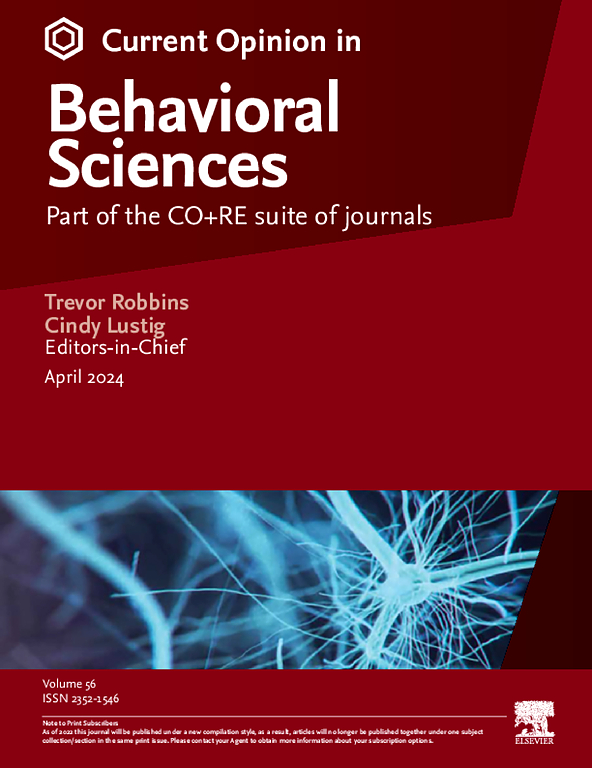Timescales of dopamine release in the striatum as a window into hierarchical control
IF 3.5
2区 心理学
Q1 BEHAVIORAL SCIENCES
引用次数: 0
Abstract
The reinforcement learning community has made significant progress in understanding dopamine (DA) in reward learning, cognitive control, and motivation. Yet, little consensus remains about the functions of distinct DA bandwidths: fast phasic transients (milliseconds), ramps (seconds), and slow tonic shifts (minutes). Are these dynamics independent channels conveying distinct decision variables or temporal expressions of a unified DA computation? These questions lie at the heart of competing frameworks proposing divergent mechanisms for DA in reinforcement learning. This rift reflects not only conceptual disagreements but also the historical limitations of bandwidth-limited measurement tools. Emerging breakthroughs for wideband DA quantification promise rigorous testing of these theories. Here, we synthesize recent conceptual and technical advances and extend our prior proposals, suggesting that DA timescales reflect hierarchical control signals, emerging from perception of goal progress and distributed, circuit-level inference about policy efficacy where tonic DA represents the integration of goal alignment abstracted across planning horizons and control hierarchy.
纹状体中多巴胺释放的时间尺度作为分层控制的窗口
强化学习界在理解多巴胺在奖励学习、认知控制和动机方面取得了重大进展。然而,对于不同的DA带宽的功能:快速相位瞬变(毫秒),斜坡(秒)和缓慢的tonic位移(分钟),几乎没有共识。这些动态独立的通道是否传达了不同的决策变量或统一数据处理计算的时间表达式?这些问题是为强化学习中的数据挖掘提出不同机制的竞争框架的核心。这种裂痕不仅反映了概念上的分歧,也反映了带宽有限的测量工具的历史局限性。宽带数据分析量化的新突破承诺对这些理论进行严格的测试。在这里,我们综合了最近的概念和技术进展,并扩展了我们之前的建议,表明数据处理时间尺度反映了层次控制信号,这些信号来自对目标进展的感知和对政策有效性的分布式、电路级推断,其中补补性数据处理代表了跨规划视野和控制层次抽象的目标一致性的整合。
本文章由计算机程序翻译,如有差异,请以英文原文为准。
求助全文
约1分钟内获得全文
求助全文
来源期刊

Current Opinion in Behavioral Sciences
Neuroscience-Cognitive Neuroscience
CiteScore
10.90
自引率
2.00%
发文量
135
期刊介绍:
Current Opinion in Behavioral Sciences is a systematic, integrative review journal that provides a unique and educational platform for updates on the expanding volume of information published in the field of behavioral sciences.
 求助内容:
求助内容: 应助结果提醒方式:
应助结果提醒方式:


